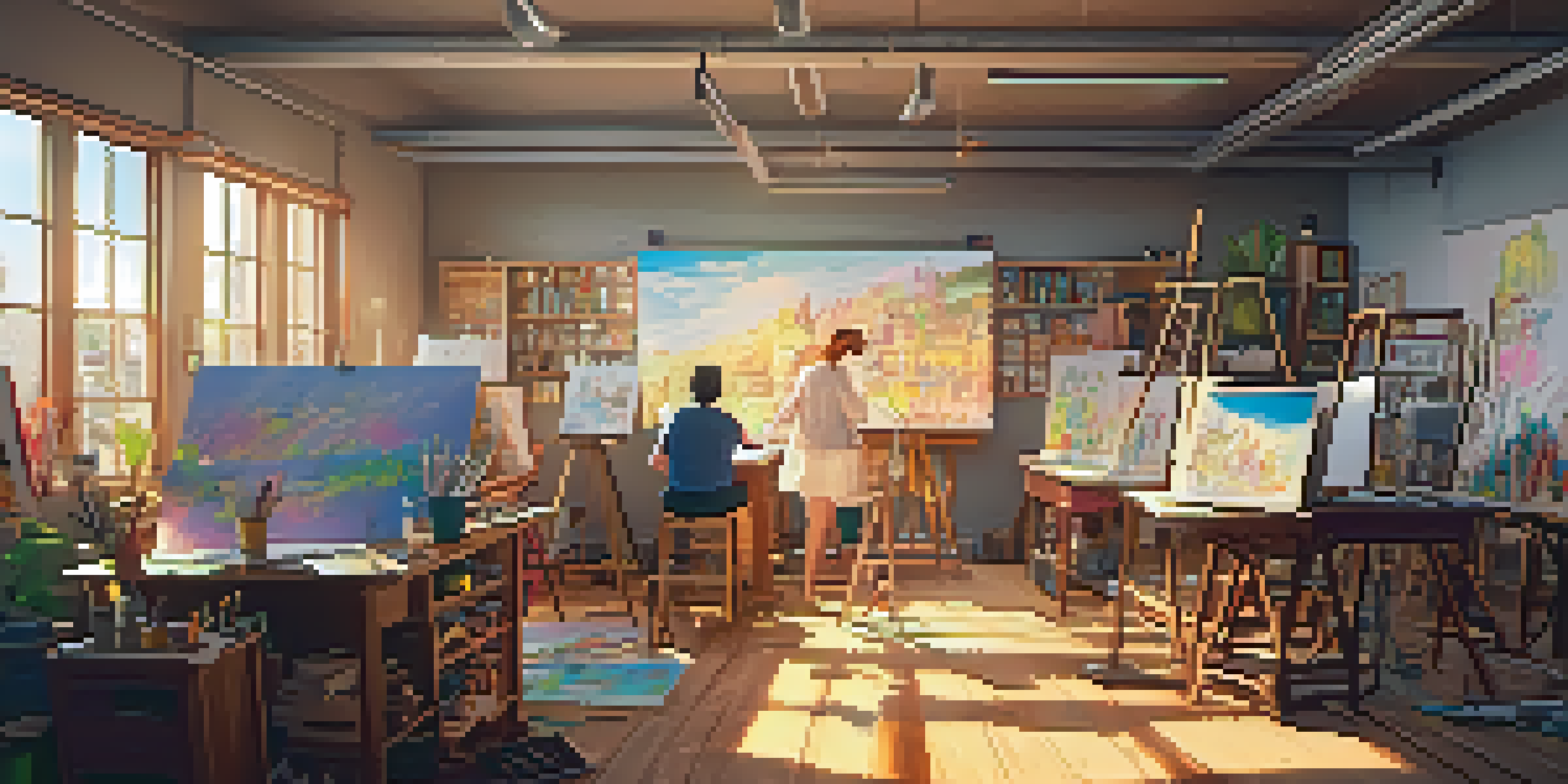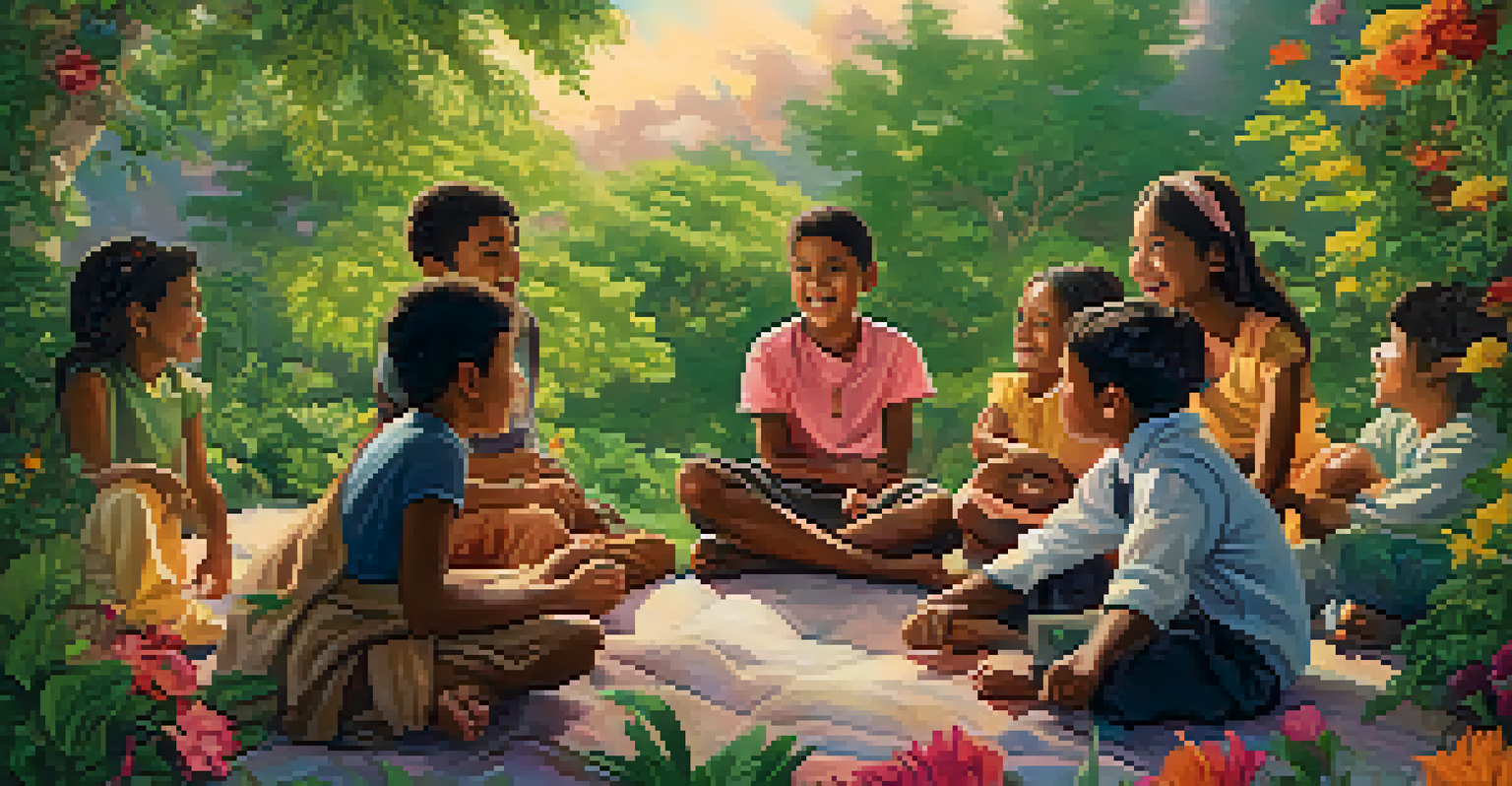The Origins of Animation: Exploring Early Techniques and Art

Unveiling the Beginnings of Animation Art
Animation, in its simplest form, is the art of bringing images to life. Its origins can be traced back to ancient civilizations, where storytellers would use visual art to convey narratives. Much like cave paintings that depicted movement, these early forms of animation laid the groundwork for what was to come.
Animation is not the art of drawings that move but the art of movements that are drawn.
The desire to depict motion reflects a fundamental human fascination with storytelling. As cultures evolved, so did their artistic techniques, leading to the creation of early instruments like the zoetrope. This device allowed viewers to see sequences of images that created the illusion of motion, a concept that would become crucial in the development of animation.
Understanding the beginnings of animation helps us appreciate the complexity of modern techniques. Today’s animations may rely heavily on technology, but at their core, they are rooted in the age-old desire to tell stories visually. This connection between past and present is what makes animation such a rich and enduring art form.
Exploring Early Animation Techniques and Tools
Before the digital age, animators relied on a variety of tools and techniques to create their art. One of the earliest methods was the use of hand-drawn frames, where each image needed to be meticulously crafted. This labor-intensive process was akin to creating a flipbook, where each page contributes to the illusion of movement.

Another significant technique was stop-motion animation, where physical objects were manipulated and photographed in incremental stages. A classic example of this is the beloved film 'The Nightmare Before Christmas,' which showcases the beauty of this painstaking process. These early techniques highlight the dedication and creativity of animators long before the advent of computers.
Animation's Rich Historical Roots
Animation's origins date back to ancient civilizations, where visual storytelling began to take shape through various artistic techniques.
These foundational techniques not only shaped the industry but also inspired a generation of artists. Each frame, whether hand-drawn or stop-motion, tells a story of patience and passion. As we look back, it’s clear that these methods were not just about creating art; they were about pushing the boundaries of imagination.
Influence of Cultural Narratives on Early Animation
Cultural narratives played a crucial role in shaping early animation techniques. Various societies infused their unique stories and folklore into animated works, adding layers of meaning and context. For instance, ancient Egyptian hieroglyphs depicted animated scenes, illustrating daily life and mythology, which served as an inspiration for future animators.
The animation is not just for kids; it's a medium that can tell powerful stories and convey deep emotions.
The tales told through these animations were not mere entertainment; they were a reflection of the values and beliefs of the time. Similarly, as animation evolved, so did the stories it told, often mirroring societal changes and technological advancements. This interaction between culture and animation continues to be relevant today.
By examining these cultural narratives, we gain insight into how animation serves as a medium for storytelling. Animators today still draw from their cultural backgrounds, allowing their work to resonate on a deeper level with audiences. Thus, the roots of animation are firmly planted in the rich soil of human experience and expression.
The Impact of Early Animation on Modern Techniques
The evolution of animation techniques from their early origins has profoundly influenced modern practices. Techniques such as rotoscoping, where animators trace over live-action footage, can be traced back to the early 20th century. This method allowed for a blend of realism and creativity, paving the way for future innovations in animation.
Modern animation also owes much to the experimentation of early pioneers who pushed the boundaries of what was possible. For example, Walt Disney’s introduction of synchronized sound in 'Steamboat Willie' was a revolutionary moment that changed the landscape of animation forever. These breakthroughs have laid the foundation for the vibrant and diverse animation styles we see today.
Cultural Narratives Shape Animation
Cultural narratives significantly influenced early animation, reflecting the values and beliefs of societies throughout history.
As we reflect on these influences, it’s important to recognize that animation is not just a technical craft; it’s an art form that has continuously evolved. The innovations of the past continue to inspire new generations of animators, ensuring that the spirit of creativity remains alive and well in the industry.
The Role of Animation in Early Cinema
As cinema emerged in the late 19th century, animation found its place alongside live-action films. Early animated shorts captivated audiences and showcased the possibilities of moving images. Films like 'Gertie the Dinosaur' not only entertained but also demonstrated the potential for character development in animation.
This era also marked the beginning of animation as a recognized art form within the cinematic landscape. Animated shorts were often shown as part of a theatrical program, drawing in audiences eager for new experiences. The combination of live-action and animation laid the groundwork for hybrid films that would come later.
Animation's integration into early cinema served as a bridge between storytelling and technology. It showcased how animation could enhance narratives and create unforgettable experiences for viewers. The legacy of this integration continues to influence filmmakers and animators today, reminding us of the magic that animation brings to the screen.
Pioneers of Animation: Pushing Creative Boundaries
The history of animation is marked by the contributions of numerous pioneers whose creativity and innovation set the stage for future generations. Figures like Émile Cohl and Winsor McCay were trailblazers who experimented with form and technique, expanding the possibilities of animated storytelling. Their work not only entertained but also inspired countless artists to explore the medium.
Cohl’s 'Fantasmagorie' is often credited as one of the first animated films, showcasing a playful and imaginative use of animation techniques. McCay’s 'Gertie the Dinosaur' introduced audiences to a character with personality, proving that animation had the power to evoke emotions. These pioneers pushed the envelope, demonstrating that animation could be more than just moving images.
Pioneers Revolutionized Animation Art
Early pioneers like Émile Cohl and Winsor McCay pushed the boundaries of animation, setting the stage for the diverse styles we see today.
By studying the works of these pioneers, we gain a deeper appreciation for the evolution of animation as an art form. Their dedication to experimentation laid the groundwork for the diverse animation styles we enjoy today. The legacy of these innovators continues to inspire a new generation of animators eager to explore the limitless possibilities of animation.
Animation: A Reflection of Society and Technology
Animation has always mirrored societal changes and technological advancements. As new technologies emerged, animators adapted their techniques to tell stories that resonated with contemporary audiences. The transition from hand-drawn animation to computer-generated imagery (CGI) is a prime example of this evolution.
CGI has opened up a world of possibilities, allowing animators to create stunning visuals that were once unimaginable. Films like 'Toy Story' revolutionized the industry, showcasing the potential of 3D animation. This shift not only transformed the way stories are told but also expanded the audience for animated films.

As we look to the future, it is clear that animation will continue to evolve alongside society and technology. The themes explored in animated works often reflect current issues and cultural conversations. This ongoing relationship between animation and the world around us ensures that the medium remains relevant and compelling for years to come.